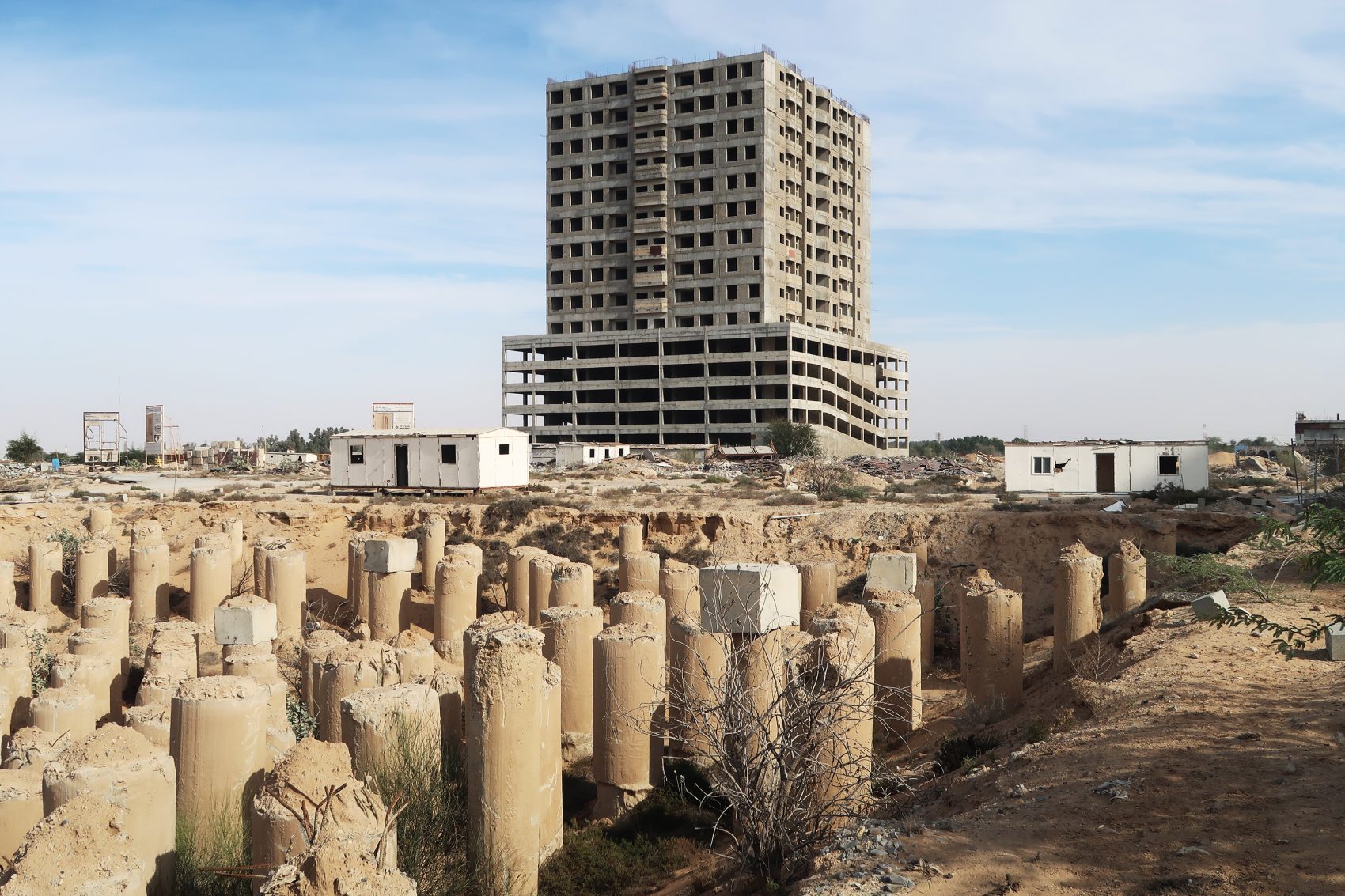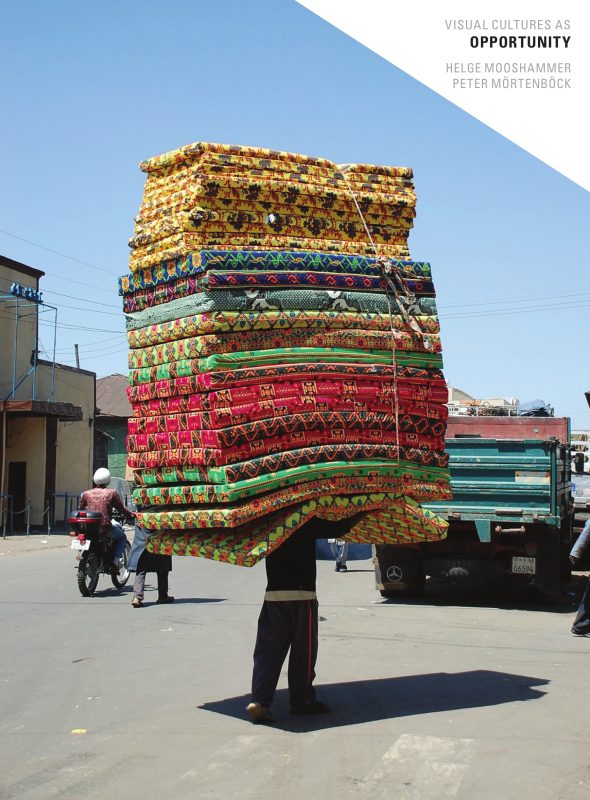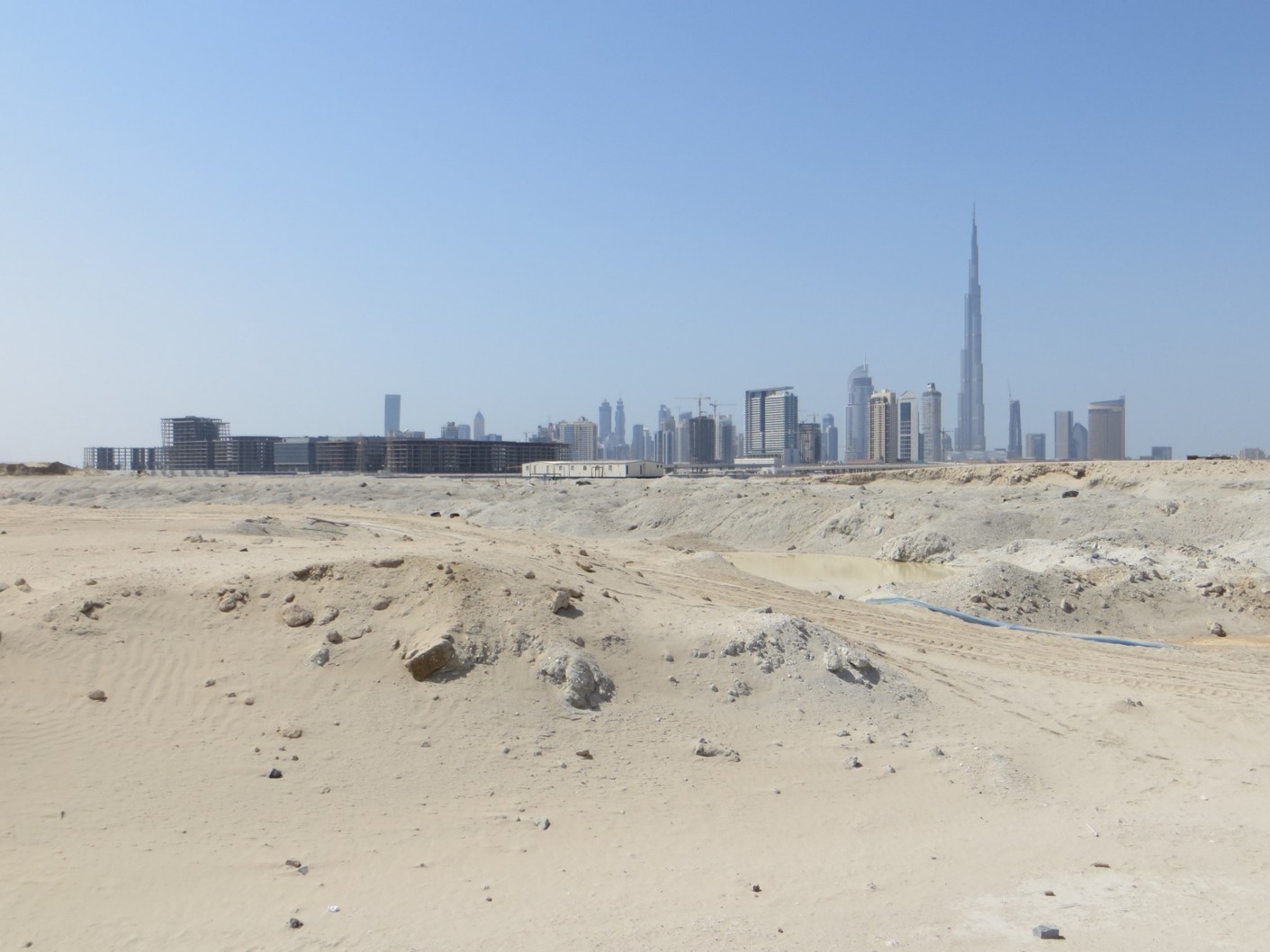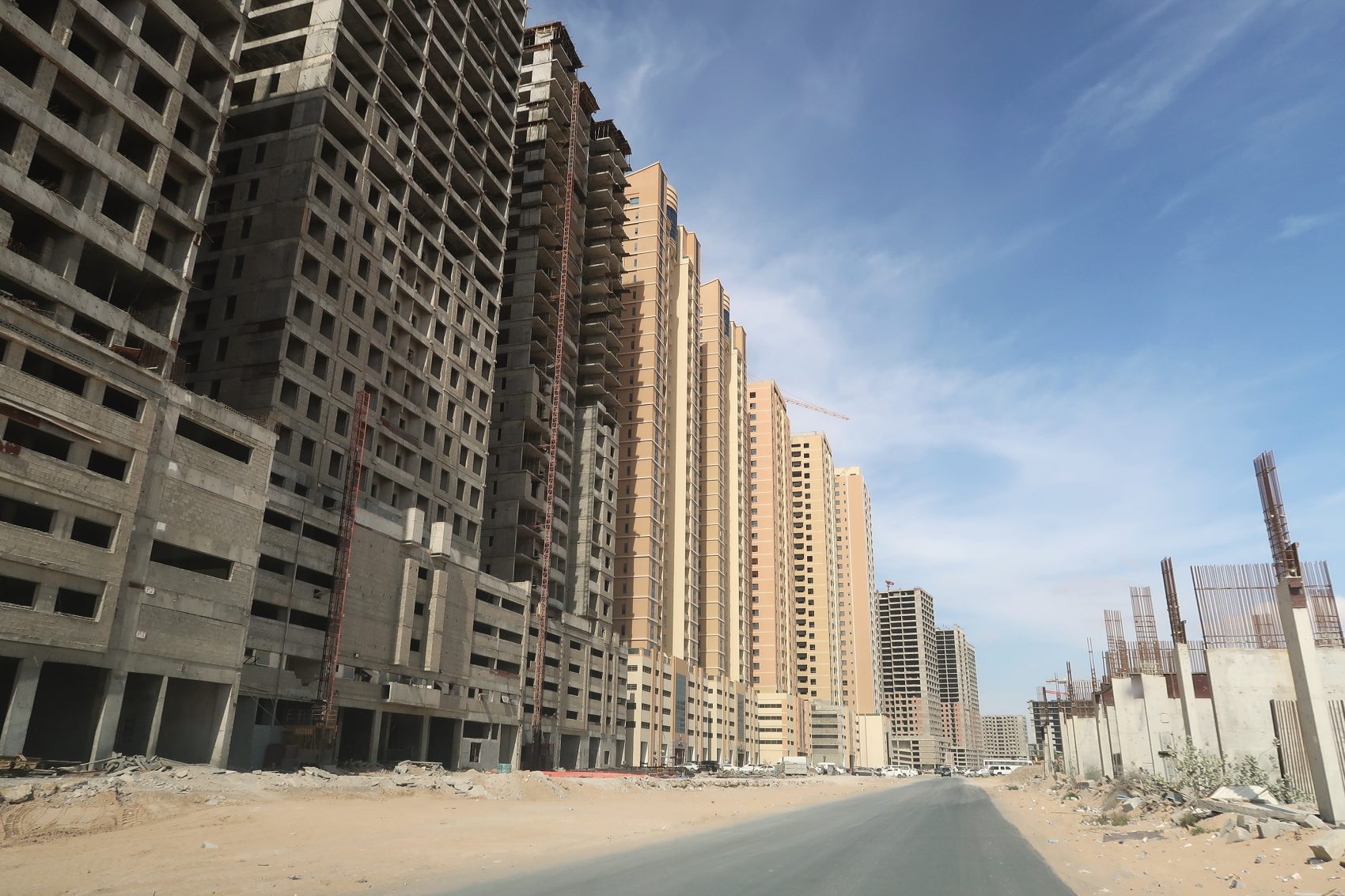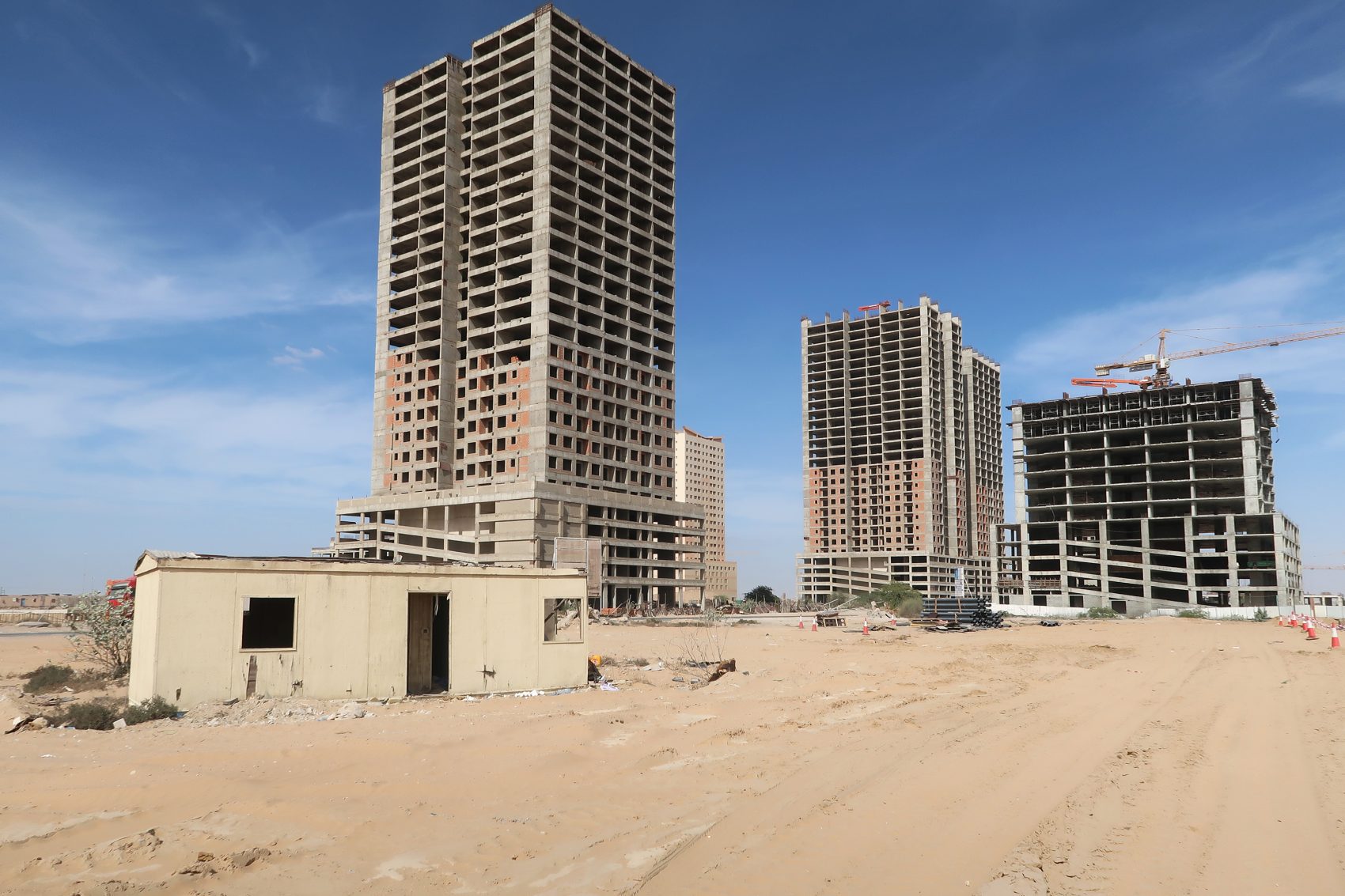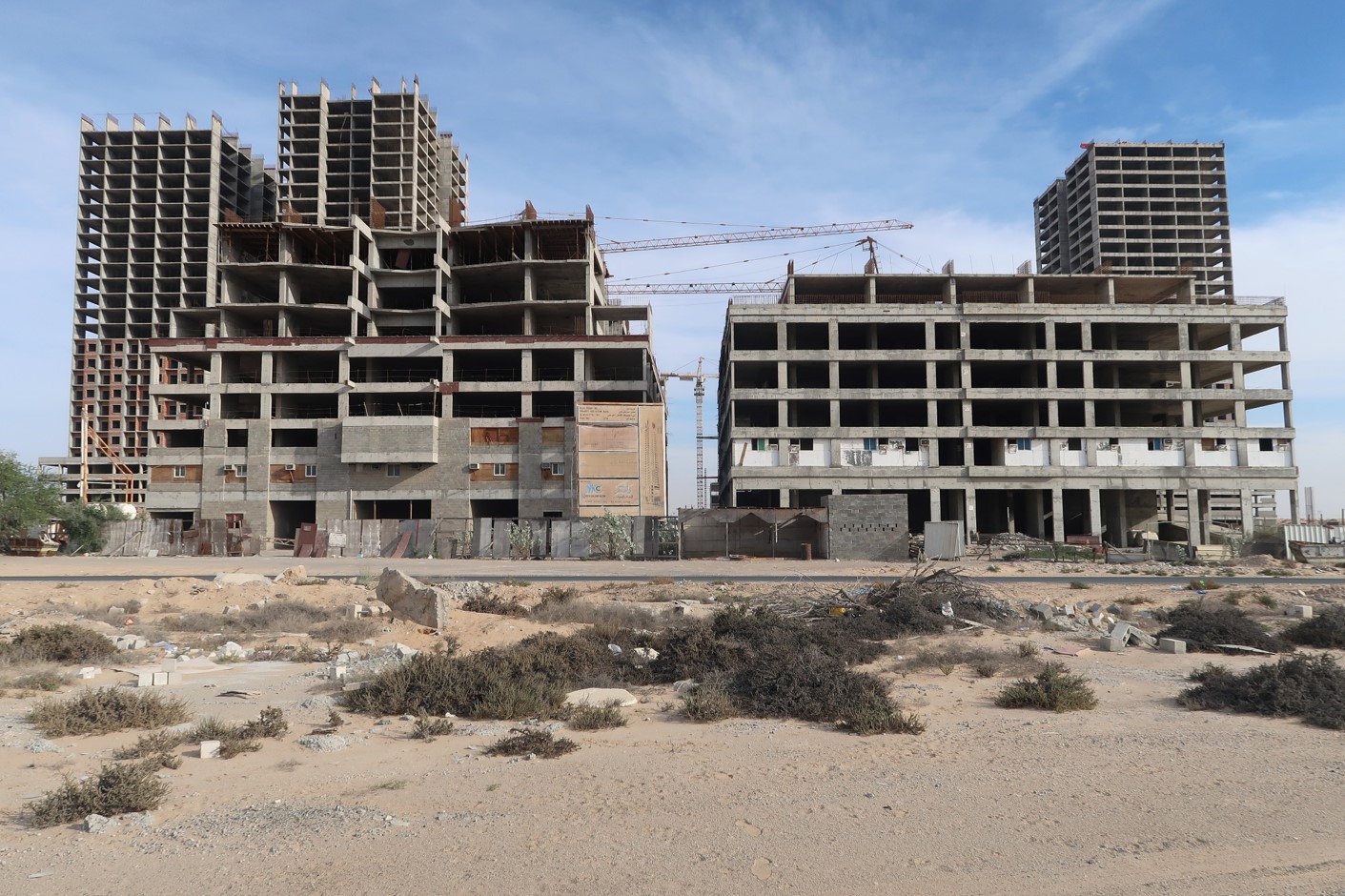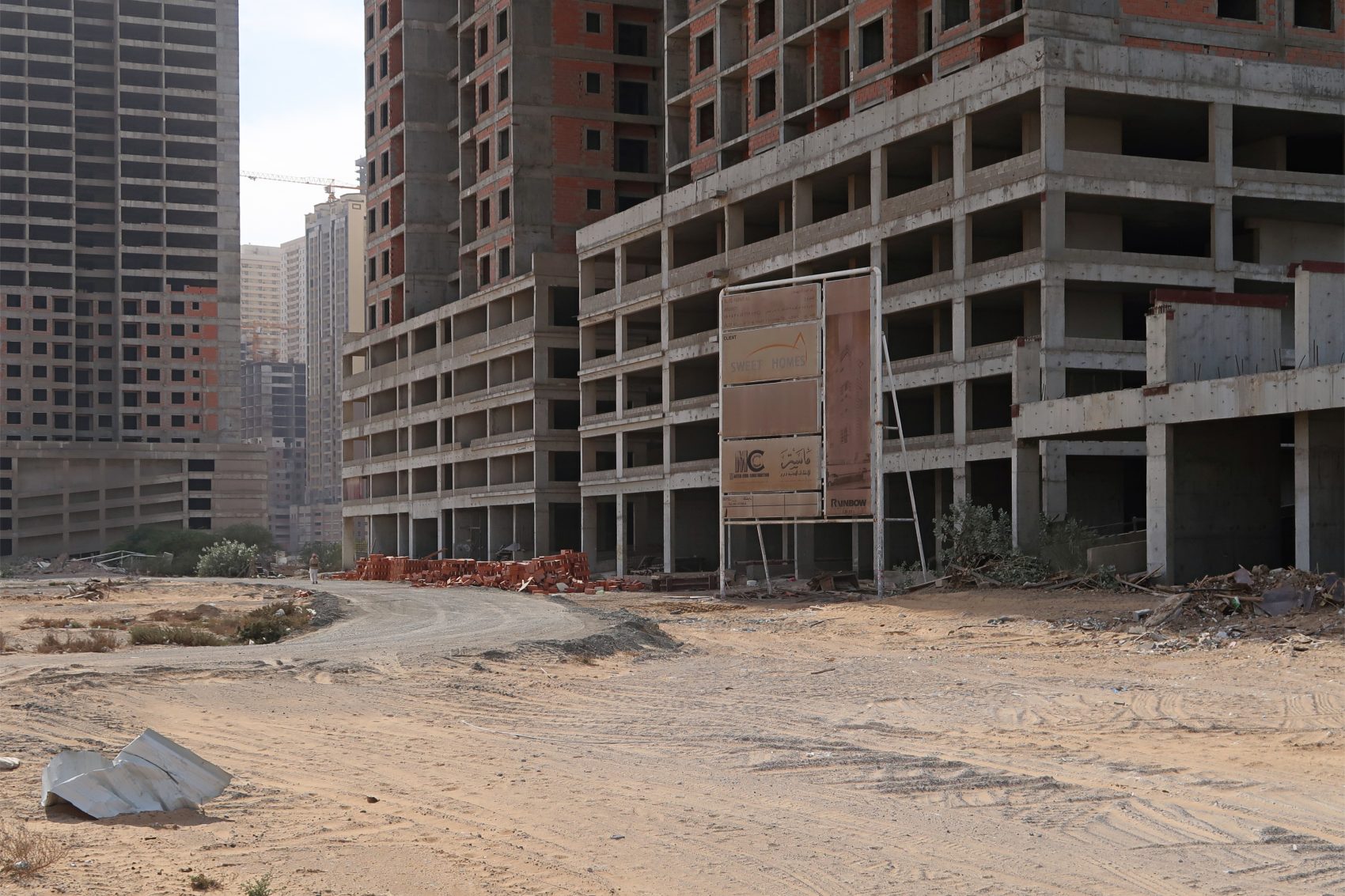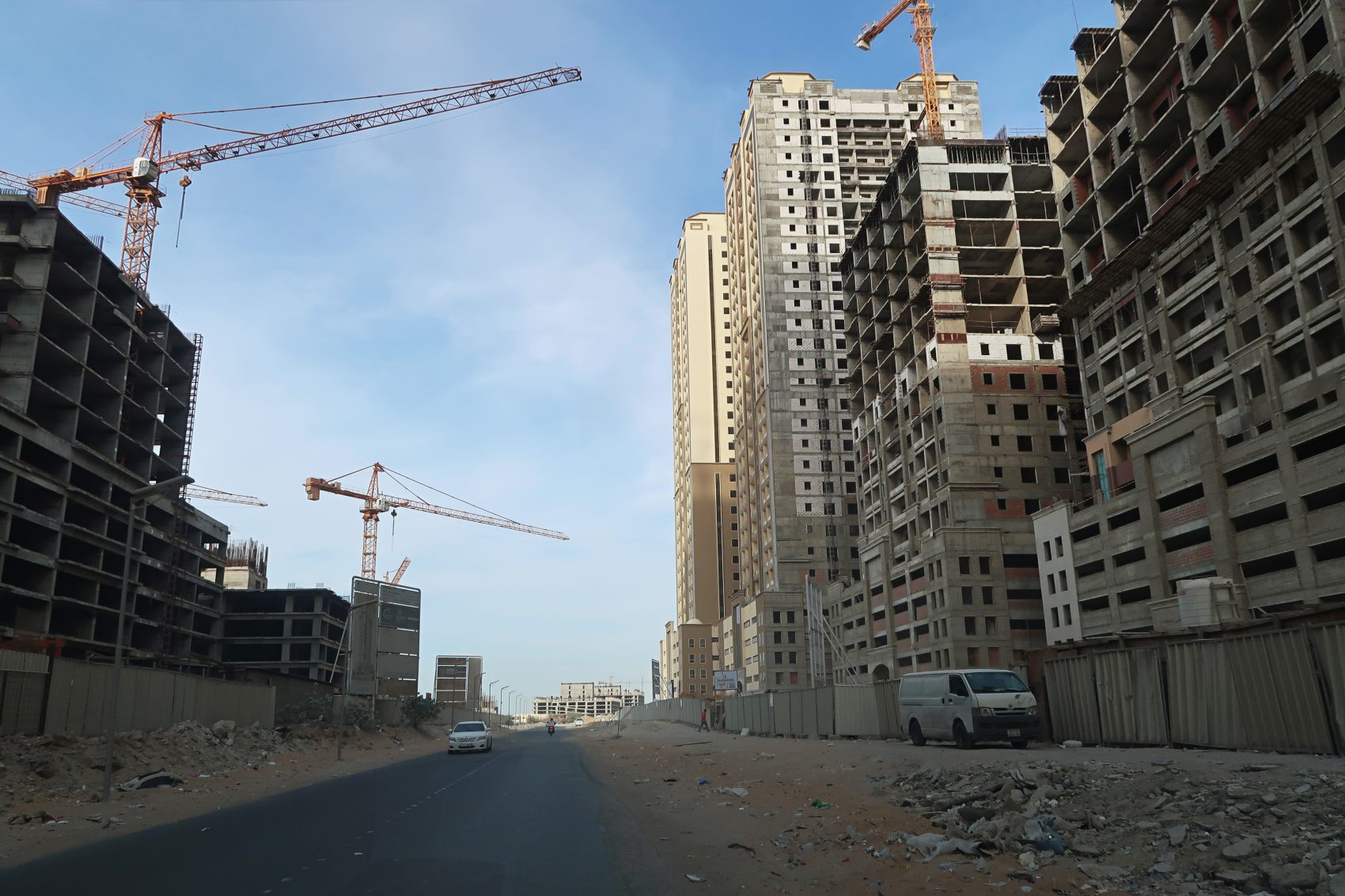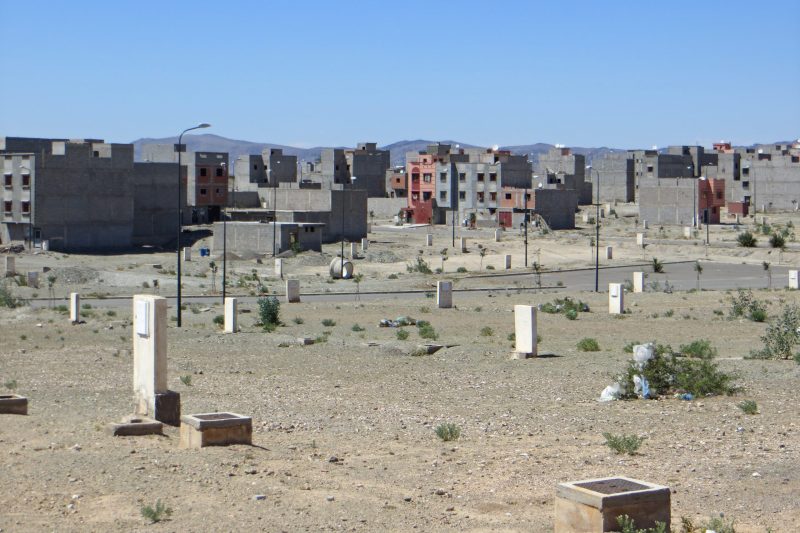Even those towers that appear finished on the outside remain uninhabitable, and investors cannot take possession of their property because Emirates City lacks the most rudimentary infrastructure, such as road access. In stark contrast to the glossy advertisements depicting solitary skyscrapers amid greenery on the shores of an artificial lake, the ghostly structures are packed close together like a nightmarish vision of Blade Runner in the desert. None of the towers sport the advertised glamorous crowns of penthouses or iconic architectural features. The monotonous replication of the same template of podium-towers—bland apartment floors sitting on top of a multilevel parking structure—adds to their alien appearance and disconnection from the desert surroundings. Looking at the plans, it becomes clear that the vision of an “avant-garde lifestyle” would never have materialized even if building had been completed. (IV) Ignoring the fact that the towers are located in the middle of nowhere at a density that rivals Asian cities such as Hong Kong or Singapore, densely packed one-bedroom apartments were sold as free-floating commodities valued in terms of unit numbers and promised amenities.
Iranians and members of the Indian diaspora from southeast Africa along with the odd European investor were lured to this fictitious environment, and into risking their life savings by the combination of “true 100 percent freehold ownership” (a popular advertising slogan on numerous property websites at the time of writing) and the promise of resident visas for the immediate family. But hopes for residency were dashed when, in 2008, the government of Ajman renounced the prospect of residency visas for property investors, causing a further drop in market values (V). Since then, blogs have been awash with the concerns of remote investors still clinging on to promises of resumed building work and desperately trying to get hold of some real value, fighting their way through the online jungle of property resale and swap deals (VI). On the ground, the stagnating building site is screened off from passersby on Emirates Road by a giant billboard with, in large golden letters, the rather ambivalent slogan, “It can only grow BIGGER the next time you pass by.”
The sites of Downtown Dubai and Emirates City indicate, on the one hand, the triumphant excess of the politically administered “liberalization” of global capital flows and, on the other, the many casualties left in the wake of its cycles of boom and bust. What binds their fortunes together is how an architectural aesthetics that signals luxurious quality and style is being deployed to connect actors from around the world and to tie their wealth to property options based soley on financial speculation. In our current era of what may best be described as “affective capitalism”—tapping, channeling, and directing capital flows by utilizing emotional ties—contemporary architecture is increasingly implicated in the maneuvers and manipulations of speculative economies, and in the process is being transformed from a physical environment in which human lives are lived into a mode of operation.
